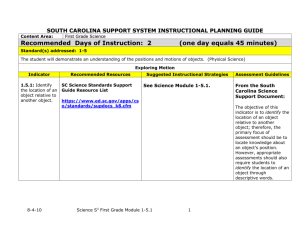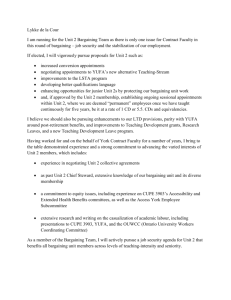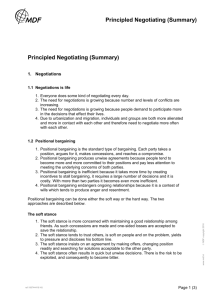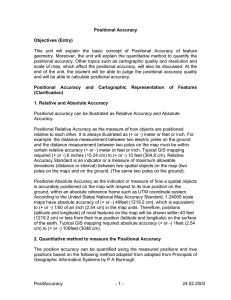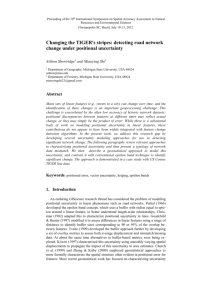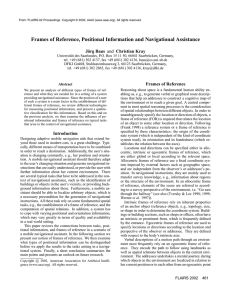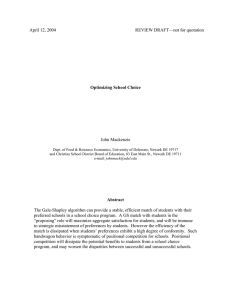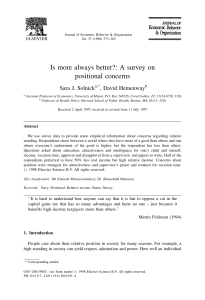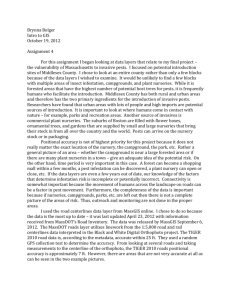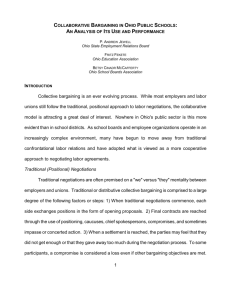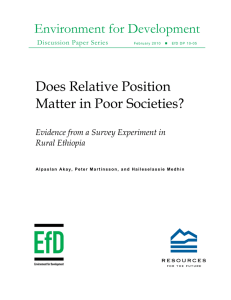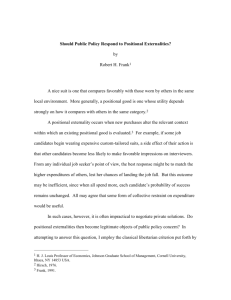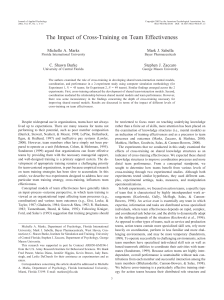Principle and Positional negotiation (Marwa & Mariam)
advertisement
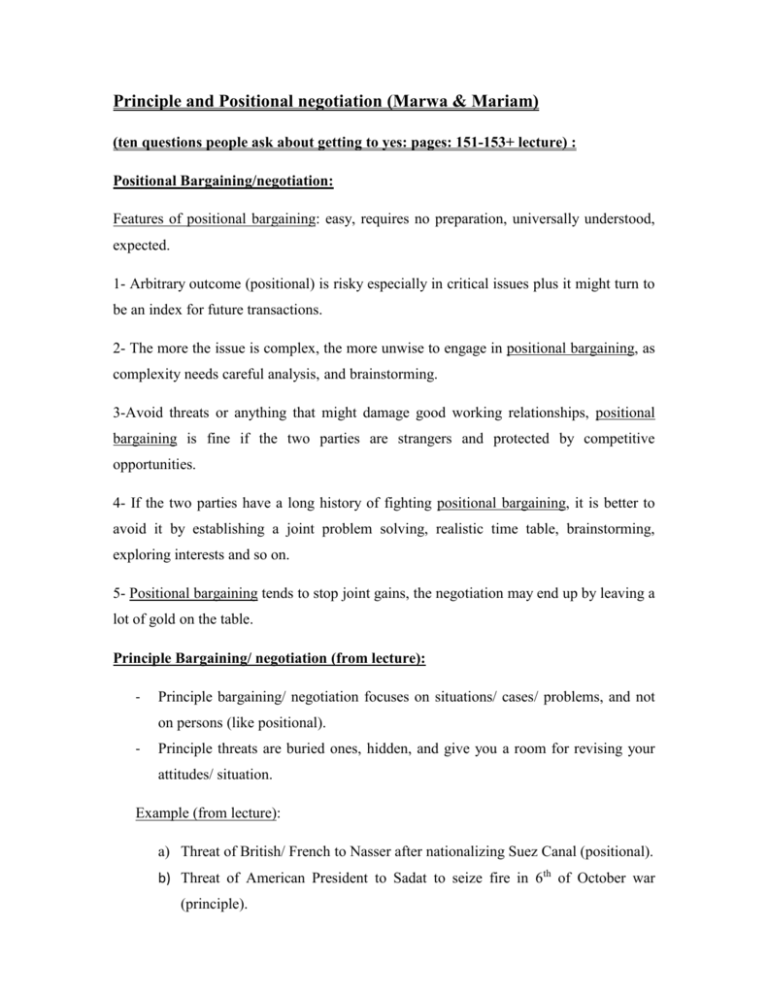
Principle and Positional negotiation (Marwa & Mariam) (ten questions people ask about getting to yes: pages: 151-153+ lecture) : Positional Bargaining/negotiation: Features of positional bargaining: easy, requires no preparation, universally understood, expected. 1- Arbitrary outcome (positional) is risky especially in critical issues plus it might turn to be an index for future transactions. 2- The more the issue is complex, the more unwise to engage in positional bargaining, as complexity needs careful analysis, and brainstorming. 3-Avoid threats or anything that might damage good working relationships, positional bargaining is fine if the two parties are strangers and protected by competitive opportunities. 4- If the two parties have a long history of fighting positional bargaining, it is better to avoid it by establishing a joint problem solving, realistic time table, brainstorming, exploring interests and so on. 5- Positional bargaining tends to stop joint gains, the negotiation may end up by leaving a lot of gold on the table. Principle Bargaining/ negotiation (from lecture): - Principle bargaining/ negotiation focuses on situations/ cases/ problems, and not on persons (like positional). - Principle threats are buried ones, hidden, and give you a room for revising your attitudes/ situation. Example (from lecture): a) Threat of British/ French to Nasser after nationalizing Suez Canal (positional). b) Threat of American President to Sadat to seize fire in 6th of October war (principle).

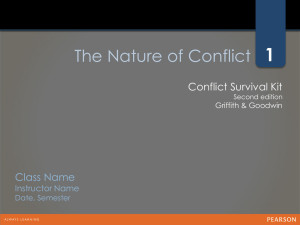
![Labor Management Relations [Opens in New Window]](http://s3.studylib.net/store/data/006750373_1-d299a6861c58d67d0e98709a44e4f857-300x300.png)



